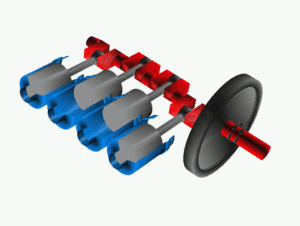As traces of the
2008 global economic slump are fading, the automotive market is on
course to witnessing a resurgence of sorts. Currently, the automotive
segment is regarded as one of the few booming sectors in the world.
Over the next few years, the automotive and automobile market is
expected to register impressive growth rates. Factors such as
passenger safety are coming under the spotlight, especially in
non-traditional economies.
In this context, the
global automotive air bag market is expected to witness high growth
rates. Many of these changes in passenger safety standards will be a
result of new legislation that has been recently introduced – or
will soon be brought about – in thriving markets. In fact, the
installation of certain safety devices is soon to become mandatory in
cars and a few other passenger vehicles. Besides the Automotive Airbag Market, other segments such as seat belt restraint systems
will attain healthy growth and garner more revenues.
A typically airbag
module is composed of the following important elements: Crash
sensors, steering wheel connecting coil, an inflator, and diagnostic
monitoring units. The size and shape of the airbag varies depending
on the specifications of the vehicle itself.
The Three Leading
Drivers for the Automotive Airbag Market
There are several
factors that prove favorable to the growth of the global automotive
airbag market, but here are the three most important ones:
- There have been recent advancements in technology, leading to a wider acceptance of automotive airbags
- Several new regulations have been introduced to ensure the safety of passengers in automotives. The adoption of these regulations has been made mandatory in regions such as Europe and North America (mainly the U.S.). This is also true of some APAC countries, such as Australia and New Zealand.
- There is an overall increase in consumers’ awareness pertaining to their own safety and security when behind the wheel or inside a vehicle. This has proven to be an advantage of the growth of the automotive airbag market.
Asia Pacific
was at the Forefront of the Automotive Airbag Market in 2013; Heavy
Investments Expected to Flow into the Region
The overall
automotive airbag market can be segmented on the basis of the types
of airbag safety systems. When segmented thus, the market features:
Front, knee, side and curtain airbags. The largest market share in
the global automotive airbag market was held by Asia Pacific in 2013.
This prominent position held by APAC, largely because of the high
automotive demand here, is expected to promote the inflow of
investments into the APAC region. A number of high-end air bag
development and improvement research initiatives are already underway
in the Asia Pacific market, and this will prove favorable to growth.
The other important
factor at play in the Asia Pacific market is that of a visible
improvement in the lifestyles of consumers. This has led to higher
demand for automobiles as well as sophisticate features housed
therein. According to the estimates of a U.S.-based market research
firm, the Asia Pacific automotive airbag market stood at US$5.91
billion in 2013. The Asia Pacific automotive airbag market will also
grow the fastest in the coming years.








